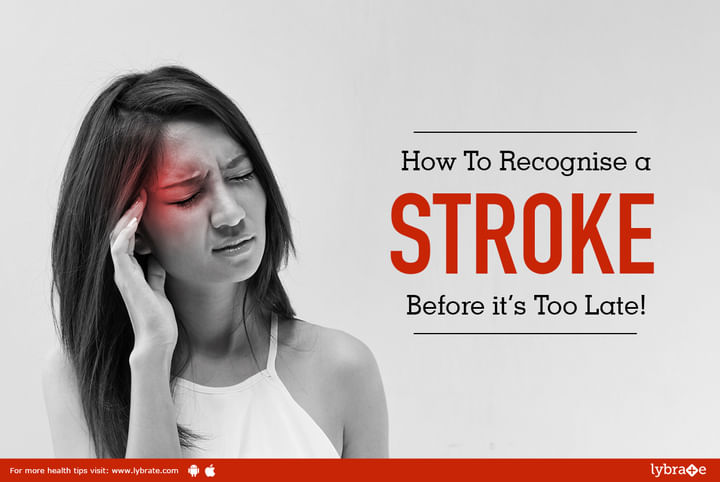Get the App
For Doctors
Login/Sign-up
Last Updated: Jan 10, 2023
BookMark
Report
How To Recognise a STROKE, Before it's Too Late!
Strokes occur when blood to the brain gets interrupted or reduced. When this occurs, brain cells begin to die as they don't get enough nutrients and oxygen. Such life-threatening episodes can strike you anytime.
There are certain signs that can help you to clearly recognise an occurrence of stroke:
- Face drooping on one side
- Weakness or numbness on one side of the body, usually a leg or an arm
- You're unable to think or say anything clearly
- You experience slurred speech
- Difficulty in moving your tongue
- You get a sudden and severe headache
What Tests can be Done to Identify the Stroke?
There are certain tests that you can do to identify these warning signs.
- To identify facial weakness, the smile test is used wherein you're simply asked to show your teeth to check for any changes in this facial expression - a lopsided smile.
- To check for weakness in the body, the arm test is performed in which you raise both your arms to the same height. In case you're unable to do so, you may be experiencing arm weakness, a sign of stroke.
- For slurring of speech, you may be asked to repeat sentences such as 'Don't cry over spilt milk' or 'The pen is mightier than the sword'.
- Stroke can also be identified through the walk test wherein with the help of another person, you walk across the room to check for changes in your step.
If not treated in time, strokes can cause permanent brain damage. More importantly, unlike heart attacks, anxiety may not always be the cause of your stroke symptoms. That's why, being aware of these symptoms and recognising them on time can help you to quickly seek medical assistance.
Tip: What Is Chemical Peel?



+1.svg)
